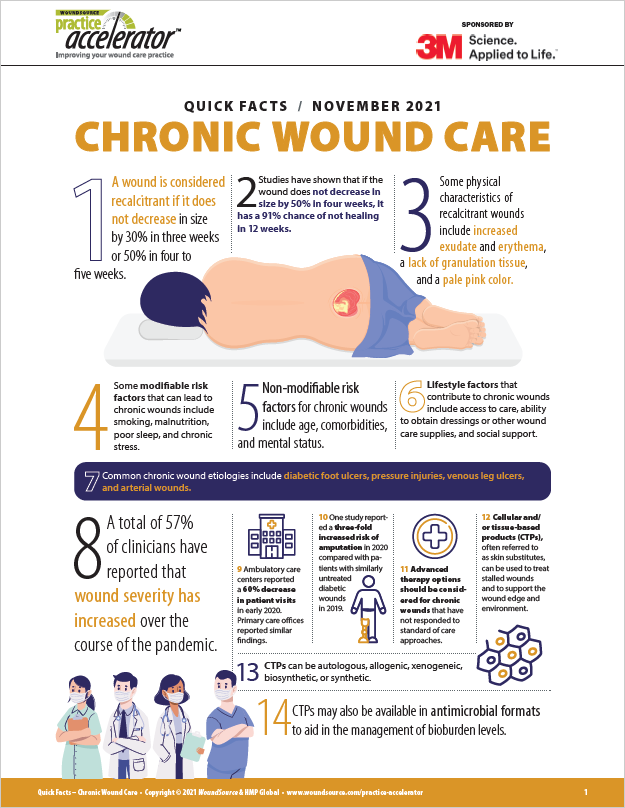Quick Facts - Chronic Wound Care

If a wound does not decrease in size by 50% in four weeks, it has a 91% chance of not healing in 12 weeks and thus becoming chronic. Chronic wounds are a serious problem that has been made worse by care access issues related to the current pandemic. When standard of care methods fail to promote wound healing, wound care professionals should consider advanced therapies such as cellular and/or tissue-based products, hyperbaric oxygen therapy, electrical stimulation, and negative pressure wound therapy. Careful documentation is key to reimbursement for these advanced wound care approaches. This fact sheet provides useful information on chronic wound care for health care professionals, including an overview of advanced treatment modalities for recalcitrant wounds. The following topics are covered:Characteristics of chronic or recalcitrant woundsRisk factors for wound chronicityCauses and types of chronic woundsEffect of the pandemic on wound careCurrent advanced therapy options for chronic woundsIndications for palliative wound careDownload Quick Facts – Chronic Wound Care for the staff at your facility. With its print-friendly format, it is ideally suited for bulletin board posting, as well as for handing out at your next in-service.





